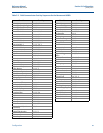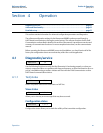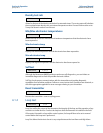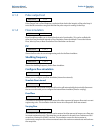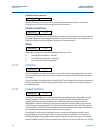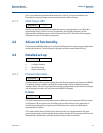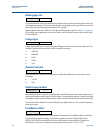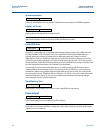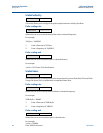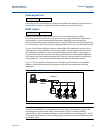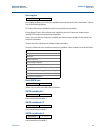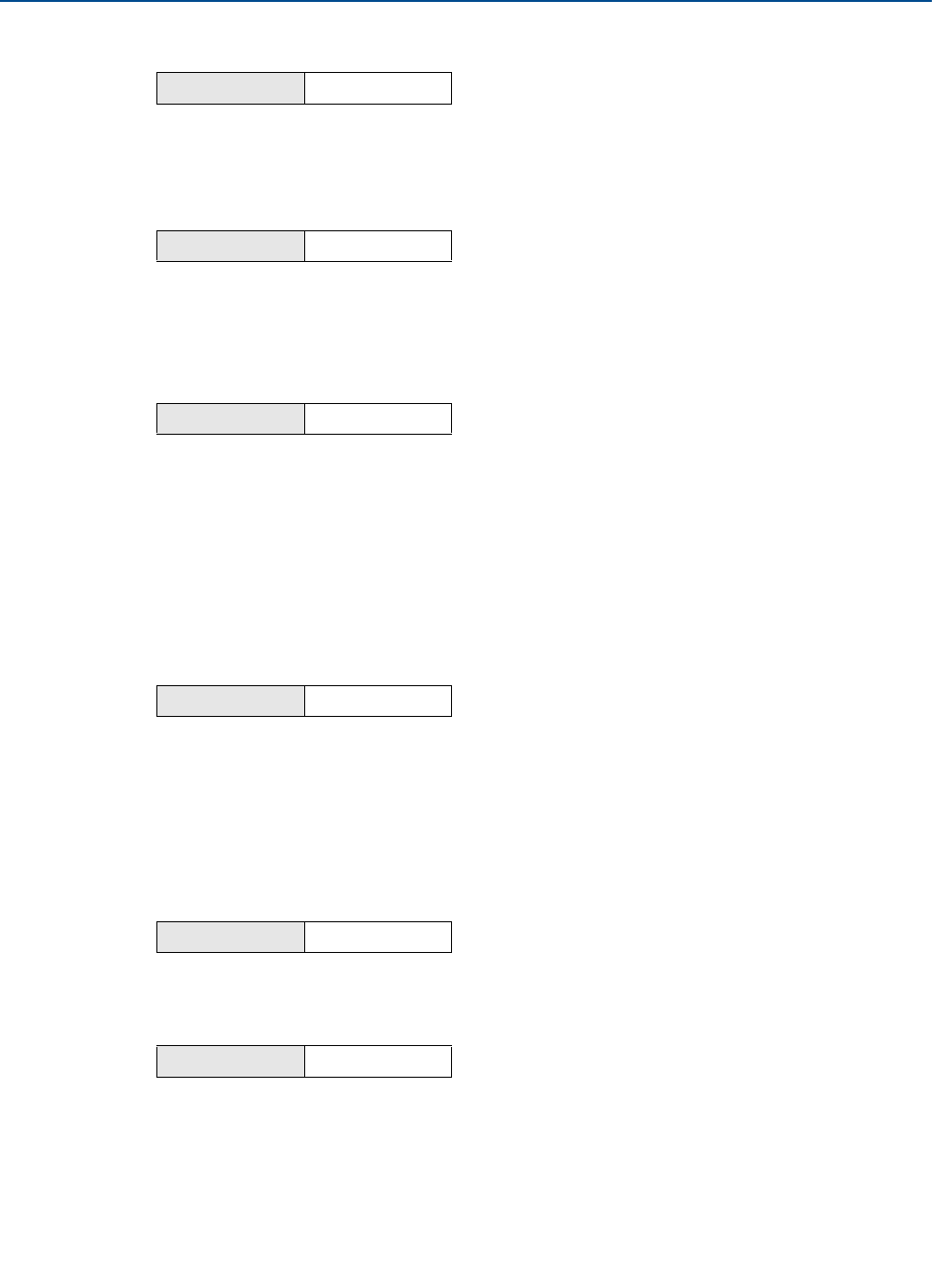
53
Reference Manual
00809-0100-4860, Rev BC
Section 4: Operation
January 2013
Operation
4.3.2 Configure outputs
The Rosemount 8600D is digitally adjusted at the factory using precision equipment to ensure
accuracy. You should be able to install and operate the flowmeter without a D/A Trim.
Analog output
For maximum accuracy, calibrate the analog output and, if necessary, trim for your system loop.
The D/A Trim procedure alters the conversion of the digital signal into an analog 4–20 mA
output.
Range values
Range Values enables you to maximize resolution of analog output. The meter is most accurate
when operated within the expected flow ranges for your application. Setting the range to the
limits of expected readings will maximize flowmeter performance.
The range of expected readings is defined by the Lower Range Value (LRV) and Upper Range
Value (URV). Set the LRV and URV within the limits of flowmeter operation as defined by the line
size and process material for your application. Values set outside that range will not be
accepted.
Loop test
Loop Test verifies the output of the flowmeter, the integrity of the loop, and the operation of any
recorders or similar devices. Conduct the loop test after the flowmeter is installed in the field. If
the meter is located in a loop with a control system, the loop will have to be set to manual
control before the loop test is performed.
Loop Test allows the device to be set to any output between the Low Alarm and High Alarm.
Alarm jumper
Alarm Jumper lets you verify the alarm jumper setting.
D/A trim (Digital-to-Analog trim)
Digital-to-Analog Trim enables you to check and trim the analog output in a single function. If
the analog output is trimmed, it will be scaled proportionally through the range of the output.
To trim the digital-to-analog output, initiate the D/A Trim function and connect an ammeter to
the loop to measure the actual analog output of the meter. Follow the on-screen functions to
complete the task.
Field Comm. 1, 4, 2
Field Comm. 1, 4, 2, 1
Field Comm. 1, 4, 2, 1, 1
Field Comm. 1, 4, 2, 1, 2
Field Comm. 1, 4, 2, 1, 3
Field Comm. 1, 4, 2, 1, 4



